
POSTS can now be found under PROJECTS.
| < PART 1 |
JAMES EVANS (1715-1839)
SHIP BUILDERS, SHIP OWNERS AND A MASTER MARINER!
25 JUNE 2020
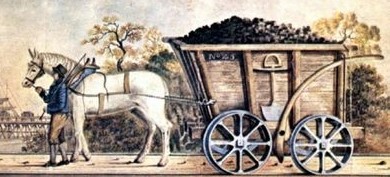
PART 2: JAMES EVANS THE ELDER (1715-1800)
James Evans the Elder's will provides a good insight into his living family, his property and his possessions. This is the most significant record I have relating to my 5th great grandfather. Other than the sections in Amy Flagg's excellent book, I have few additional references. It is unclear as to when he settled in South Shields. This was most probably in the 1760's which raises the question as to where he settled between the end of his indentures in the 1740's when he qualified as a shipwright. The local church records bearing the name of Evans other than that of his burial, I can only connect to his son.
The British Newspaper Archive (BNA) has proved to be a valuable source of information with over ten references relating to James's shipping activities and his status as a premier shipbuilder during the 1770's and 1780.
In the clipping below, James Evans together with 11 other shipbuilders is railing about the employment of unqualified carpenters as shipwrights in the shipbuilding industry on mouth of the Tyne.
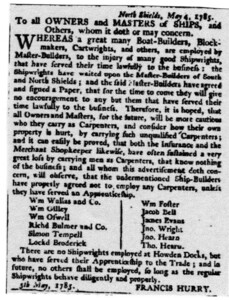
Amy Flagg identifies William Wallis, William Gilley, William Oswell, Richard Bulmer, Simon Temple, Lockwood Broderick, William Forster, Jacob Bell, James Evans and John Wright as shipbuilder's in South Shields predominantly in the Shadwell Street area other than the Hearn's who were associated with North Shields. By the end of the 1780's many of these shipyards encountered financial difficulties resulting in bankruptcy. James Evans the Elder was operating in 1786 from the Market Street in close proximity to Simon Temple's dock. Perhaps this proclamation was issued by the shipowners because they had encountered a downturn in orders, and they wanted to ensure that shipwrights had an entitlement to the available employment.
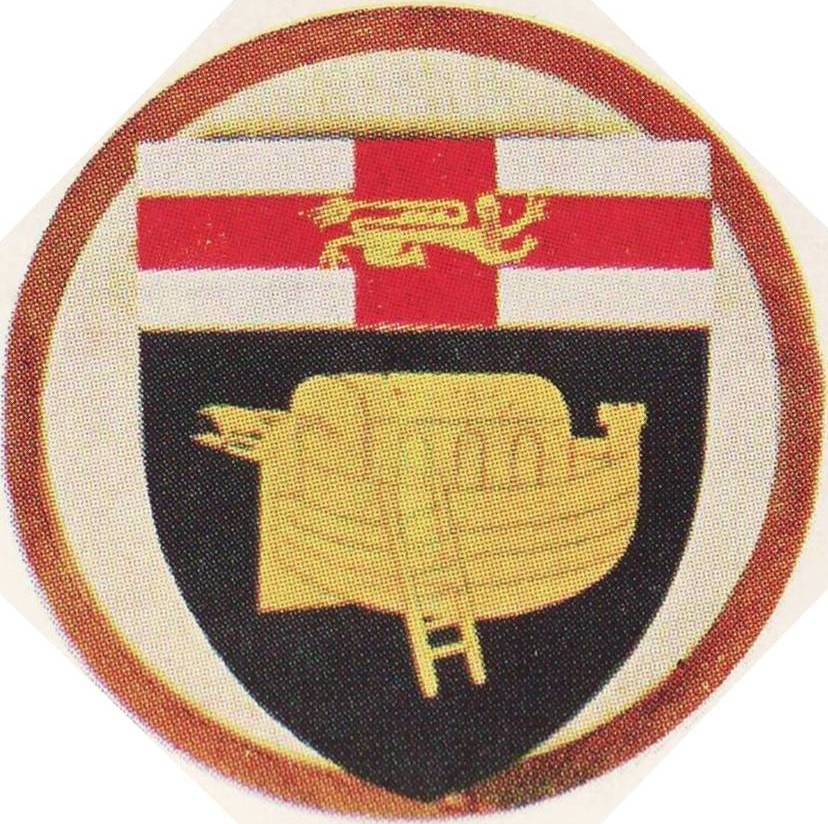
IMAGE 2
The crest of the
Company of Shipwrights of Newcastle (f.1622).
(Courtesy of The Shipwrights of Newcastle website)
James Evans like many of the shipyard owners was a shipwright apprenticed in Newcastle as far as I can establish, to Thomas Scott. This information is from a more recent aspect of my research, working through the microfiche references to shipwrights in The Tyne and Wear Archives. There were few exclusive shipbuilders at the time of James Evans the Elder's apprenticeship during the 1730's and of those listed, none of them bore the name of Scott. Prominent shipwrights building at Newcastle in the 17th century was Steel, Greene, Wilkinson and Wrangham. Most of whom had connections with South Shields.
James Evans the Elder, may well have been apprenticed to a member of the famous Scott family of Sandgate, from which John Scott, the first Lord Eldon and Lord Chancellor (1751-), was a direct descendant. It was he who gained notoriety in his elopement with Bessie Surtees (1754-1831). In 1772; she climbed from a second-floor window at her home in Sandhill and according to the story, into the arms of penniless Oxford University student, John Scott.
The Scott family from lowly beginnings, prospered via the coal trade, starting with William Scott (1696-1776) who in 1716 was apprenticed to a coal fitter eventually owning several keels, a public house and later a ship with the granting of the freedom of Newcastle as a hoastman, member of the ancient guild.
Meetings were held in the Sallyport gateway in the Town Walls, later known as the Wallgate Tower. In 1722. When the company was at its most prosperous and influential, a tower was built above the meeting rooms as shown.
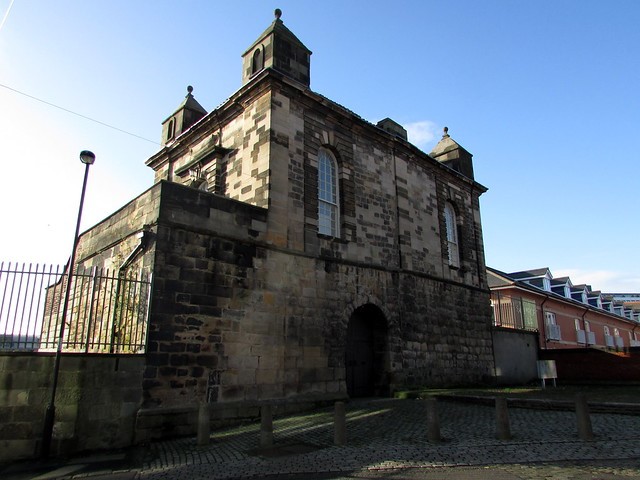
IMAGE 3
2 Feb 2014 by 'Reading Tom' (Internet Research)
British shipbuilding was encouraged in 1685 by an Act of Parliament passed to penalise the use of foreign tonnage providing an opportunity for the expansion of ship building on the Tyne at Newcastle. However, this was short-lived as by 1722 some Tyne skippers were quoted as saying ''Shipbuilding had formerly flourished at Newcastle''. The reason for this contraction, was that the main export from the river was that of coal and an effective and indeed cheaper method was in the use of Keels, small wooden boats which could carry up to 21 tons of coal from the pits up the Tyne to the mouth of the river where the coal was loaded on to larger seagoing vessels. By 1725, there was an estimated 400 keels in operation.
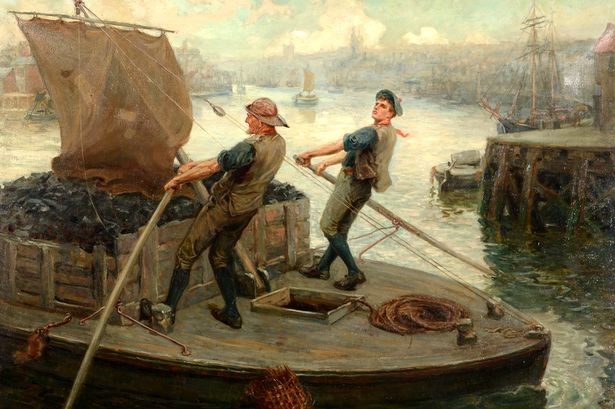
IMAGE 4
(courtesy of the Evening Chronicle)
The keels serving the Tyne were usually built on a strip of the bank of the river from which they could easily be launched. A supply of timber, shipwrights and labourers were the main requirements and certainly a much cheaper option than the construction of dockyards including the purchase of equipment. Dock buildings or equipment such as cranes was not required. Price was the major issue; the cheaper the coal could be transported to London, the less chance there was from the coalfields elsewhere in the country being competitors in the trade. I also have keelmen ancestors starting in South Shields with William Pollard (1758-1846), my 4th great-grandfather. George Pollard (1792-1825), a keelboat man, my 3rd great- grandfather also in my maternal line was killed whilst working on his boat on the River Tyne in 1825.
For several years, I have also pondered as to the place of birth of James Evans the Elder recently, settling after a process of elimination on Berwick upon Tweed where a James Evans was baptised on the 10th April 1715, the son of Margaret Richardson and James Evans who had married in the town in 1711 (see Part 2A). It was not until 1751 that ship building commenced on the River Tweed which explains in part, James's apprenticeship in Newcastle.
Once James Evans the Elder qualified as a shipwright in the early 1740s I have been unable to establish where he was employed, he may well have worked in this capacity for Robert Wallis. It was he who famously broke the monopoly of Newcastle Corporation in the control of shipbuilding by the Shipwrights Company in his construction of a vessel in a yard in Shadwell Street adjoining Coble Landing 1718/1720 and defending two lawsuits in the process. The lack of church records suggest that he may well have lived and worked in a more prominent shipbuilding area elsewhere in the country.
However, I am confident that by 1770 at the latest, James Evans the Elder was again on Tyneside as a shipbuilder in South Shields.
4th January 1771 James Evans (Junior) was apprenticed to Richard Scott at South Shields with his indenture paid by James Evans, Shipwright of South Shields. A sum of �‚£3 2s 2 �‚½d was paid the 11th July 1780 for his release.
I have found several references to both James Evans father, son and grandson in ‘The Records of the Company of Shipwrights of Newcastle upon Tyne, 1622-1967,' volume 184, edited by David Rowe & published by The Surtees Society in 1970 of which this is the earliest.